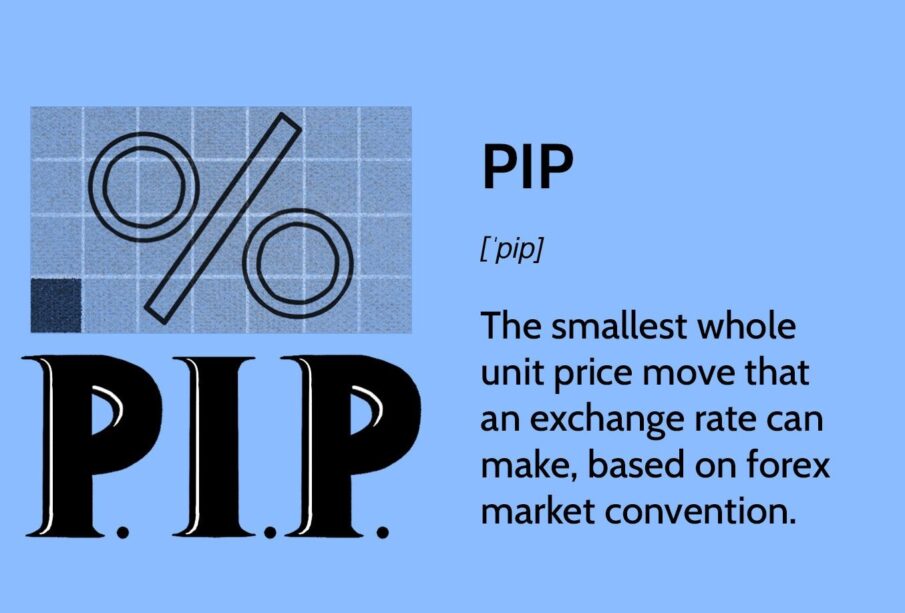What is a PIP in Forex Trading

Are you curious about what a PIP in Forex Trading represents? Or you may be already involved in forex trading and want to learn more about this market indicator. Understanding what a pip is and how it works can be incredibly beneficial for your trades regardless of where you stand.
This article will provide an overview of what a pip is and its significance when trading forex currencies. We’ll also discuss how pips help traders potentially maximise profits by acting as powerful indicators while fast-checking currency exchanges against fluctuating rates. Keep reading to gain insight into the world of forex part-time trading.
Defining PIPs in Forex Trading
Foreign exchange trading has become increasingly popular in recent years. As such, novice and professional traders need to clearly understand the various terms and concepts involved in this financial activity. One such term essential for forex traders to comprehend is PIP, which is “percentage in point.” Put, a PIP is the smallest unit of measure used in forex trading to indicate a change in the price of a currency pair.
Understanding how to calculate PIPs can help traders better evaluate potential profits or losses in their trades. In essence, comprehending the definition of PIPs and knowing how to apply them in forex trading is crucial to becoming a successful trader in this dynamic and complex market. Check out https://www.adss.com/en/trading-glossary/pip-definition/ for more information on the definition of PIP.
Benefits of Using PIPs in Forex Trading
The PIP is a valuable tool for forex traders, indicating how much money you can make from a trade. Using this indicator allows you to respond quickly to market changes without manually calculating the profit or loss for each currency pair. The more pips gained with each trade, the larger the potential gains. Understanding how to use PIPs in forex trading can be incredibly beneficial.
Another advantage of PIPs in forex trading is that they consistently monitor and evaluate market trends. By keeping track of the number of pips gained or lost on each trade, you can easily detect patterns in your trades and adapt your strategy accordingly. It can help traders make more informed decisions and potentially maximise their gains over time.
Calculating PIPs in Forex Trading
When calculating PIPs in forex trading, the most important thing to consider is the base currency of the traded pair. It will determine which type of calculation should be used when calculating PIPs. If you use a USD/EUR pair, one pip would equal 0.0001 units of the euro and 0.00001 units of the dollar. To calculate the amount of money gained or lost on a trade, you will need to consider the current exchange rate for that particular currency pair and the number of PIPs gained or lost.
For example, if a trader purchased on EUR/USD at an exchange rate of 1.1230 and sold it at 1.1280, the trader would have made a 50 pip profit on that trade. In this case, the dollar value would be calculated by multiplying 50 pips by 0.00001, equaling 0.005 USD.
Using Stop Loss and Take Profit with PIPs in Forex Trading
PIPs can also set stop loss and take profit orders when trading forex. It is done by setting a certain number of pips below or above the current price, depending on whether you are selling or buying. For example, if you were trading EUR/USD at 1.1230 and wanted to set a stop loss order of 40 pips, you would set the stop loss order at 1.1190 (40 pips below the current price).
Similarly, if you were buying and wanted to set a take profit order of 50 pips, then you would set the take profit order at 1.1280 (50 pips above the current price). Setting these orders can be very useful when trading forex, allowing traders to limit their losses and profits before entering a trade.
Understanding the Risk Involved with Using PIPs in Forex Trading
Using PIPs to measure potential gains or losses can benefit traders, but it is essential to remember that a certain amount of risk is still involved. As with any form of trading, investors should always do their due diligence before entering any trades and uphold themselves beyond what they are able and willing to lose.
By understanding the risks involved in forex trading and using PIPs to inform their decisions, traders can potentially minimise risk while maximising potential gains. It makes them more likely to succeed in trading currencies over time, with minimal losses overall.
Examples of How to Use PIPs Effectively When Trading Forex
Finally, let’s look at a few examples of how to use PIPs effectively when trading forex currencies. Firstly, always remember to use stop loss and take profit orders if you are using PIPs to measure potential gains or losses. This way, you can limit your profits and losses before entering any trades.
Additionally, it is essential to constantly monitor your trades and adjust your strategy accordingly. As we have discussed, PIPs can be used as powerful indicators to track market trends and inform decisions, so make sure you are keeping an eye on the number of pips gained or lost in each trade.














